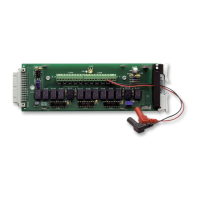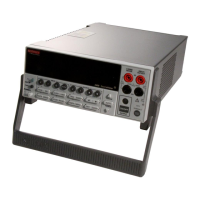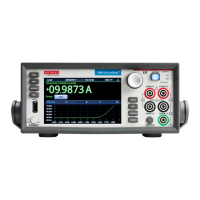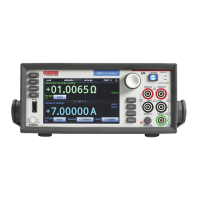Interactive SourceMeter® Instrument Reference Manual Section 8:
2450-901-01 Rev. B/September 2013 8-225
Details
The trigger event detector enters the detected state when an event is detected. When this command is sent, the
instrument does the following actions:
• Clears the trigger event detector
• Discards the history of the trigger line
• Clears the trigger.tsplinkin[N].overrun attribute
Example
tsplink.line[2].mode = tsplink.MODE_TRIGGER_OPEN_DRAIN
trigger.tsplinkin[2].clear()
on TSP-Link line 2.
Also see
trigger.tsplinkin[N].overrun (on page 8-226)
tsplink.line[N].mode (on page 8-232)
trigger.tsplinkin[N].edge
This attribute indicates which trigger edge controls the trigger event detector for a trigger line.
Type TSP-Link accessible Affected by Where saved Default value
Instrument reset
Power cycle
Usage
detectedEdge = trigger.tsplinkin[N].edge
trigger.tsplinkin[N].edge = detectedEdge
• Detect falling-edge triggers as inputs: trigger.EDGE_FALLING
• Detect rising-edge triggers as inputs: trigger.EDGE_RISING
•
Detect either falling or rising-edge triggers as inputs: trigger.EDGE_EITHER
The trigger line (1 to 3)
Details
When the edge is detected, the instrument asserts a TTL-low pulse for the output.
The output state of the I/O line is controlled by the trigger logic, and the user-specified output state of the line is
ignored.
Example
tsplink.line[3].mode = tsplink.MODE_TRIGGER_OPEN_DRAIN
trigger.tsplinkin[3].edge = trigger.EDGE_RISING
Sets synchronization line 3
to detect rising edge
triggers as input.
Also see
digio.writeport() (on page 8-46)
tsplink.line[N].mode (on page 8-232)
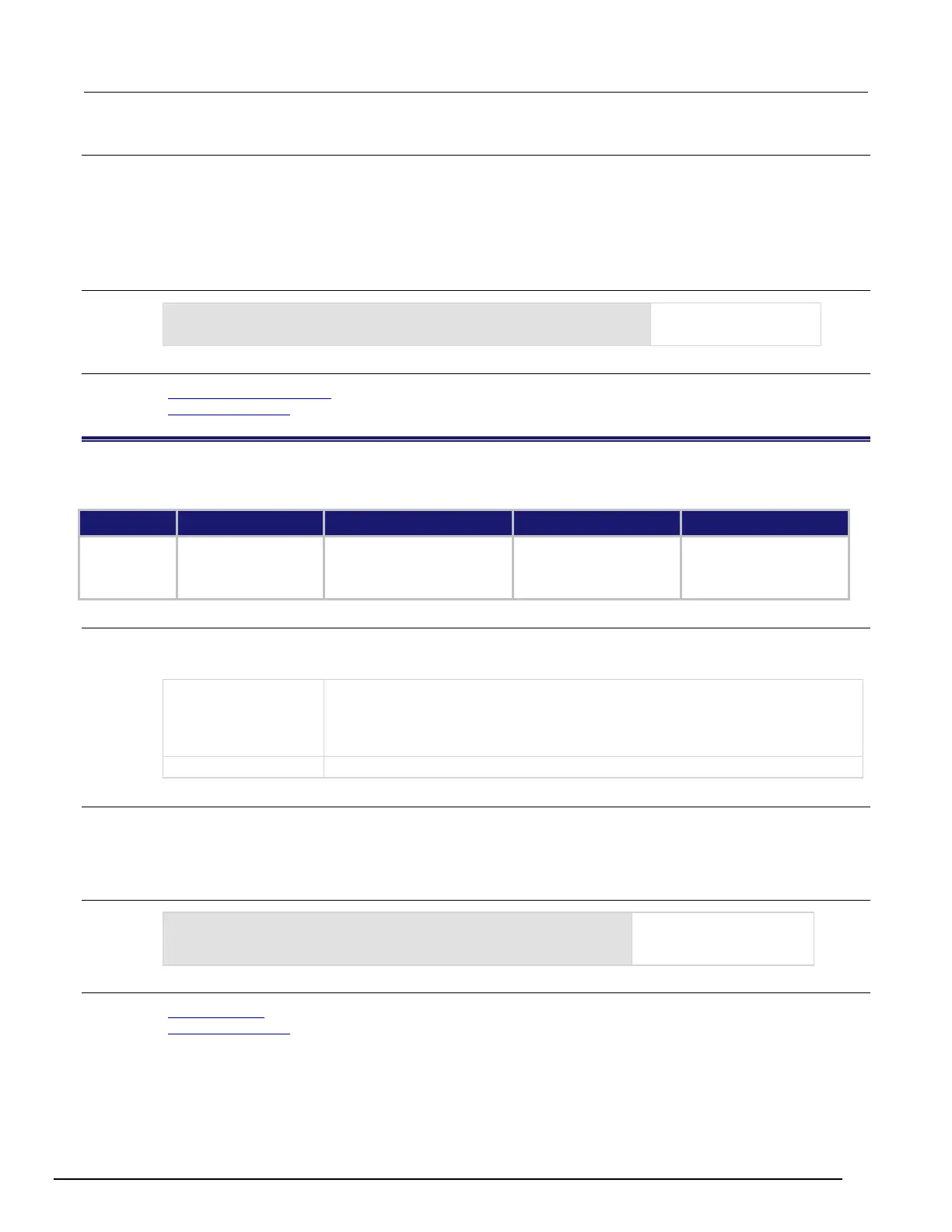